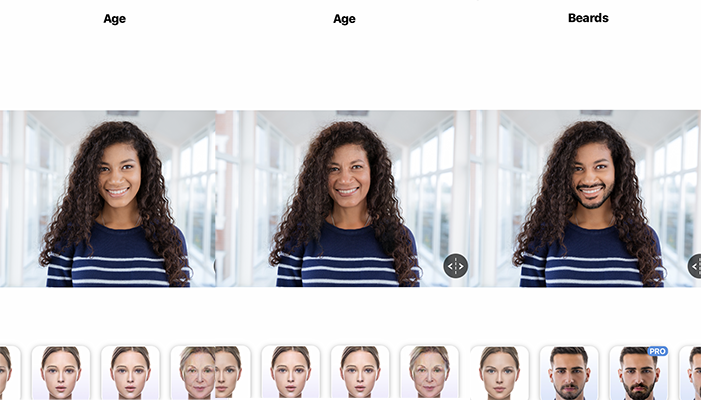FaceApp Explained
This week there’s been a lot of buzz about the Face App, with privacy concerns being raised about where and how the images are stored.
The app requires users to upload a photo, which is then altered using artificial intelligence, to change their age, appearance or gender.
When stories move so fast, it can be difficult to establish when narratives may be sensationalised or based purely on speculation, when newspapers so often quote each other as sources.
This means that one newspaper using a source, is then duplicated quickly across other platforms, which can give the illusion of credibility, and create panic where there is uncertainty.

What are the concerns?
Concerns were raised when people found out that the FaceApp was Russian and intensified when developer, Joshua Nozzi said the app uploaded all photos in a user’s camera roll.
But, The Guardian spoke to a French security researcher who found that the app, was not in fact uploading user’s entire camera rolls:
“Alderson said he also couldn’t find any evidence it was stealing all your data; it was just getting your device ID and your device model. Which, again, is pretty much to be expected. The reason the app was causing such a fuss, Alderson hypothesized, was because of fears about Russia.”
Concerns were also raised about the privacy policy of photos that were uploaded to the platform and stored, with users pointing out that rights were reserved to use the images for other purposes. But this may not be much different from the privacy policies of other platforms. Collecting images, and reserving the rights to publish, store and share them is not unique to FaceApp, but is also seen in the terms and conditions of popular social media platforms.
Wired spoke to a data protection and privacy expert, Pat Walshe who said:
“That clause means you give away rights to the content you create using their tool…
However, many apps have similar terms. If we’re being brutally honest, the terms of use regarding FaceApp are no different to any of the multiple social media platforms billions of people use every day,”
It all seems a bit confusing right? Here’s what you need to know
1. How to question the news
When an article like this comes out here are some top tips for challenging a news story:
・If a news story is very dramatic or exaggerated it’s usually a sign something’s not right- check other sources
・Ask yourself- is this story simply telling you something or trying to shock or worry you
・Check the publishing date- some articles and sources, are reused but aren’t recent
・Question the evidence, dig deeper into expert sources, polls and studies
・Check the site and URL- do they look credible?
・If the URL has a strange ending like.xychs.com it may not be a legit source
Don’t forget to talk to young people in your care about questioning the news
2. Protecting your Privacy
The case of FaceApp has sparked an important debate, prompting us to consider how our personal information including biometric data is used, stored and accessed in the digital era.
It’s worth remembering that any data we share is only ever as secure as the system that protects them. This includes personal information like our date of birth, phone number and our bio-metric data including face identification, retina scans and finger prints.
As a rule of principle, you should be mindful to not share any information with platforms you are unfamiliar with, or don’t trust.
Follow OurSaferSchools on Twitter




